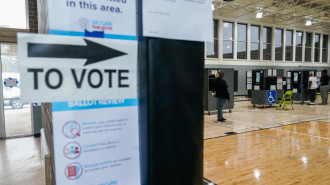UN issues warning about sombre fate that awaits Iraqi IDPs languishing in refugee camps
More needs to be done to ensure the future of internally displaced Iraqis stuck in refugee camps, the United Nations has urged.
Whilst more Iraqis are returning home, the ones remaining in refugee camps need more than just shelter for a greater chance of sustainability once they’re out, UN Office for the Coordination of Humanitarian Affairs said on Monday.
“Although the humanitarian context in Iraq has transitioned into a new phase, vulnerable people continue to face immense challenges. Six million people were displaced during the conflict against the Islamic State in Iraq and the Levant from 2014 to 2017”, OCHA said in a statement.
The number of internally displaced people has decreased significantly, but to use numbers as a yardstick to measure post-IS Iraq recovery remains misleading, as OCHA stressed the need to ensure fundamental services such as education and healthcare are provided after they leave the camps.
“While more than 4 million people have returned to their communities, approximately 1.8 million people remain displaced, and 54 per cent of all internally displaced persons (IDPs) have been displaced for three or more years.
"The prolonged nature of their displacement has led to increased vulnerabilities among IDPs; in 11 districts throughout Iraq, displaced persons are facing a very high severity of needs”, the organisation added.
There is also fear for those who have left refugee camps, who return to unstable living conditions that put them at risk, according to OCHA.
“Approximately 11 per cent of the roughly 4 million returnees are in locations where living conditions are not considered to be adequate, dignified and safe. While significant efforts are underway to reconstruct infrastructure and restore basic services across the country, it will take years to rebuild Iraq
"Almost 138,000 residential buildings were impacted by the conflict," OCHA added.

![Palestinians mourned the victims of an Israeli strike on Deir al-Balah [Getty]](/sites/default/files/styles/image_684x385/public/2024-11/GettyImages-2182362043.jpg?h=199d8c1f&itok=xSHZFbmc)


![The law could be enforced against teachers without prior notice [Getty]](/sites/default/files/styles/image_684x385/public/2178740715.jpeg?h=a5f2f23a&itok=hnqrCS4x)
 Follow the Middle East's top stories in English at The New Arab on Google News
Follow the Middle East's top stories in English at The New Arab on Google News

![Palestinian journalists in West Bank [Getty]](/sites/default/files/styles/image_330x185/public/2167088057.jpeg?h=a5f2f23a&itok=smdkN-46)
